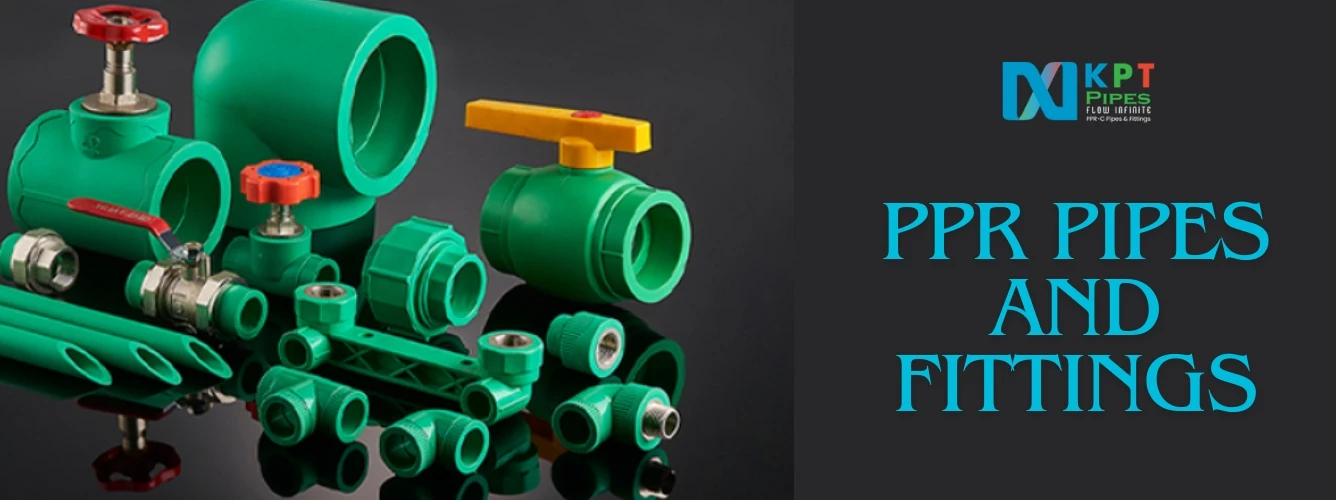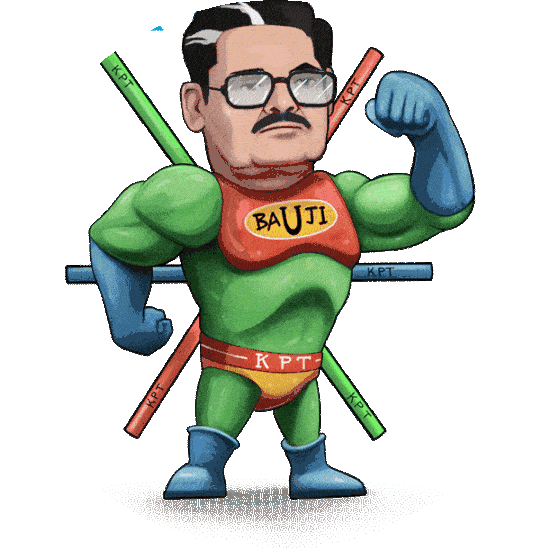
07 Nov PPR Pipes and Fittings in Ladakh
Polypropylene Random Copolymer (PPR) pipes have revolutionized modern plumbing due to their exceptional strength, versatility, and resistance to high temperatures and chemicals. These characteristics make PPR pipes an ideal choice for various applications, ranging from residential and commercial to industrial plumbing systems.
Importance of PPR Pipes in Modern Plumbing
PPR pipes are designed to withstand high pressures, extreme temperatures, and prolonged use without deteriorating, making them an essential material for modern plumbing. With benefits such as extended longevity, heat resistance, and easy installation, PPR pipes offer versatility and reliability for a wide range of applications.
The Relevance of PPR Pipes in Ladakh
Ladakh, with its varied climate and expanding infrastructure, requires robust and reliable plumbing solutions. Traditional piping systems often fail under the region’s fluctuating temperatures. PPR pipes are the perfect solution for Ladakh’s plumbing needs, as they are resistant to freezing and cracking, ensuring a consistent and reliable water supply throughout the year. KPT Pipes, a leading manufacturer in the area, provides top-quality products tailored to these specific requirements.
What are PPR Pipes?
PPR pipes, crafted from Polypropylene Random Copolymer, a robust plastic material, are renowned for their resilience, flexibility, and capacity to endure extreme temperatures and chemicals. This harmless, non-toxic substance is appropriate for use in potable water systems.
Manufacturing Process of PPR Pipes and Fittings
The production of PPR pipes and fittings involves the extrusion of molten polypropylene through customized molds to create the necessary pipe sizes and shapes. This meticulous process guarantees uniformity and dependability in the quality of the pipes. The molten polypropylene is heated to the perfect temperature for molding, then cooled to preserve its strength before being precisely cut to size. Fittings for PPR pipes are produced using injection molding, creating a variety of types such as elbows, tees, and couplings. Stringent quality control measures are implemented throughout the manufacturing process to ensure that the pipes and fittings adhere to industry standards for durability, pressure resistance, and chemical stability.
Types of PPR Pipes Available in Ladakh
Standard PPR Pipes
Widely used in residential, commercial, and industrial settings, standard PPR pipes are known for their durability and versatility.
Greentherm Pipes (PPR-C)
Designed for high-temperature applications, such as heating systems and hot water distribution, Greentherm Pipes offer enhanced performance under thermal stress.
ThermaPlus Pipes (PPR-FR)
Enhanced for greater strength and heat resistance, ThermaPlus Pipes are ideal for extreme temperature conditions, ensuring stability and longevity.
Pneumatic Pipes
Suitable for transporting pressurized air or gas, these pipes are resistant to deformation under high pressure, making them suitable for industrial applications.
PPR-AL-PPR (Composite Pipes)
These pipes combine polypropylene and aluminum layers to enhance durability and withstand thermal expansion, providing reliable performance in diverse conditions.
PPR-CT (Chlorinated Polypropylene Random Copolymer)
Offering enhanced chemical resistance, PPR-CT pipes are specifically designed for industrial applications where chemical exposure is a concern.
Glass Fiber Reinforced PPR Pipes
These pipes offer exceptional strength and stiffness, making them ideal for demanding industrial uses where durability is critical.
UV-Resistant PPR Pipes
Engineered to endure extended exposure to sunlight, these pipes are ideal for outdoor use, maintaining their integrity and performance over time.
Types of PPR Fittings Available in Ladakh
Elbows
Used to change the direction of a pipe system’s flow, elbows are essential for versatile plumbing layouts.
Tees
Tees connect three pipes, improving water distribution and allowing for more complex piping systems.
Couplings
Couplings extend the length of a piping system by joining two pipes, ensuring a continuous flow.
Valves
Valves regulate water flow throughout the system, providing control and flexibility.
End Caps
End caps close off pipe ends to prevent leaks, maintaining the integrity of the plumbing system.
Reducers
Reducers are used to seamlessly connect pipes of different diameters, ensuring a smooth transition and efficient flow.
Flanges
Flanges allow for inspection and maintenance, making them essential for system longevity and reliability.
Crosses
Crosses connect four pipes, enabling multi-directional water distribution for complex systems.
Caps
Caps for PPR pipes seal pipe ends, similar to end caps, to ensure no leaks and maintain system integrity.
Applications of PPR Pipes in Ladakh
Residential Use
PPR pipes are ideal for plumbing systems in homes, providing long-lasting durability and resistance to temperature changes, ensuring a reliable water supply.
Commercial Use
Suitable for water supply, heating, and cooling systems in commercial buildings, PPR pipes handle extensive water distribution and temperature regulation efficiently.
Industrial Use
Effective for transporting chemicals, compressed air, and other fluids in industrial settings, PPR pipes offer resistance to corrosion and high pressures, making them suitable for demanding environments.
Advantages of PPR Pipes
Durability and Longevity
PPR pipes are known to last over 50 years, resistant to corrosion and chemical degradation, making them a long-term investment for plumbing systems.
Corrosion Resistance
This feature ensures the purity of transported water and fluids, preventing contamination and maintaining safety.
Temperature and Pressure Resistance
PPR pipes are capable of enduring changes in temperature and pressure, making them suitable for a wide range of applications.
Eco-Friendliness
Manufactured with eco-consciousness in mind, PPR pipes are non-toxic, recyclable, and have a reduced environmental footprint.
Cost-Effectiveness
With a long lifespan and low maintenance requirements, PPR pipes offer substantial savings over time, making them a cost-effective solution.
Installation of PPR Pipes
Required Tools and Equipment
- Pipe cutters
- Welding machines
- Fitting tools
Installation Steps
- Planning: Measure and design the piping layout for efficiency.
- Cutting: Utilize a pipe cutter to precisely cut pipes to the required lengths.
- Welding: Join pipes and fittings using a fusion welding tool, ensuring strong connections.
- Testing: Check for leaks and verify the security of all connections before use.
Common Mistakes to Avoid
- Incorrect Cutting: Ensure precise pipe lengths to avoid leaks and weak points.
- Poor Welding: Follow proper welding techniques to ensure strong, leak-free joints.
- Inadequate Testing: Thoroughly test the system to identify any issues before it becomes operational.
Choosing KPT Pipes for PPR Pipes in Ladakh
Company Overview
KPT Pipes is a leading manufacturer of high-quality PPR pipes and fittings in Ladakh, known for its commitment to innovation and quality. They offer reliable solutions tailored to the region’s unique plumbing needs.
Product Quality
KPT Pipes is well-known for manufacturing premium PPR pipes and fittings that meet rigorous performance and durability standards. Their products are designed to withstand demanding condit ions and ensure lasting efficiency.
Customer Service
KPT Pipes provides exceptional customer support, guiding clients through product selection and installation to ensure a smooth experience.
Cost of PPR Pipes in Ladakh
Factors Influencing Cost
- Pipe thickness
- Diameter
- Pressure rating
- Additional features like insulation or reinforcement
Cost Comparison with Other Materials
PPR pipes are often more cost-effective compared to traditional materials like copper or galvanized steel due to reduced transportation and labor costs, as well as energy savings.
Long-Term Cost Benefits
Despite greater initial prices, PPR pipes are a profitable investment due to their energy efficiency, longevity, and minimal maintenance requirements, resulting in lower overall expenditures throughout the life of the building.
How to Buy PPR Pipes in Ladakh
Steps to Purchase
- Contact KPT Pipes: Inquire about competitive pricing, comprehensive product details, and professional guidance.
- Explore Options: Review the range of PPR pipes and fittings available, including specifications, pricing, and delivery options.
- Ensure Quality: Trust in KPT Pipes’ dedication to quality for reliable and consistent product performance.
Conclusion
PPR pipes have significantly advanced the plumbing industry in Ladakh, offering excellent insulation, durability, and cost-effectiveness. KPT Pipes remains a premier choice for high-quality PPR pipes and fittings, providing reliable solutions for residential, commercial, and industrial applications. Reach out to KPT Pipes today to discover their extensive offerings and enhance your construction projects with superior PPR pipe solutions in Ladakh.



